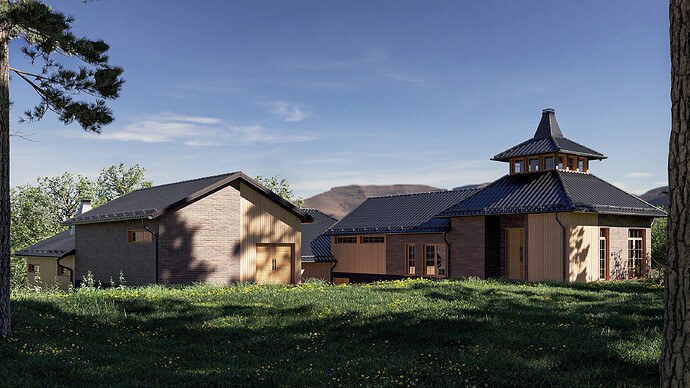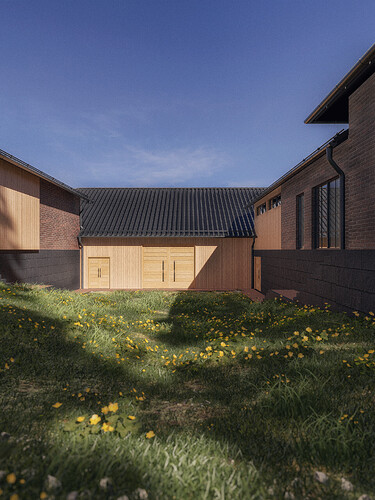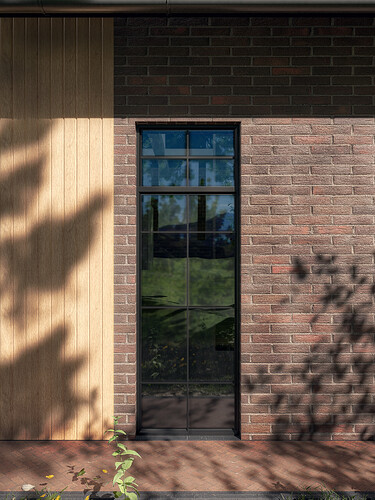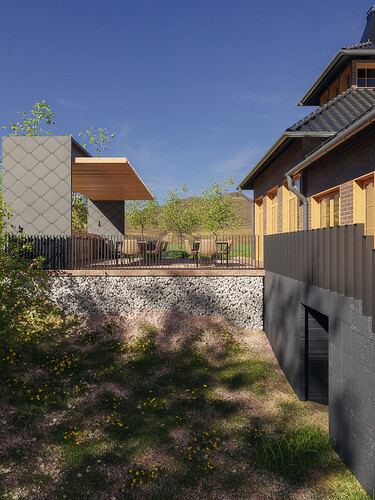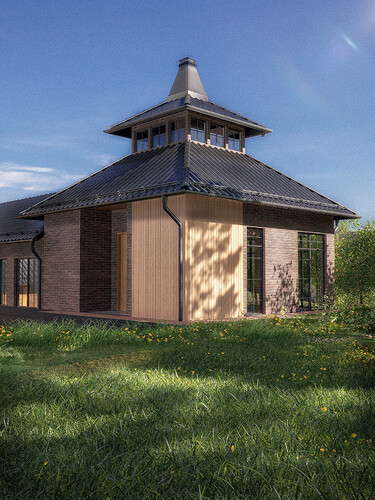Hello everyone. It’s been a challenging year for me. I’ve had a lot of work and projects, so I haven’t had time to participate and follow the works here on Blenderartist. Anyway, I would like to present this project for a distillery - a facility for the production of spirits called “rakija.” It’s a traditional alcoholic beverage produced here in Serbia, mainly made from fruit, most commonly plums, but it can also be made from apples, pears, or even with the addition of some medicinal herbs.
I’d like to take this opportunity to describe my workflow and mention a few useful addons that I used in modeling and rendering. The model was, of course, created in Blender and rendered with Cycles. The object was mostly modeled conventionally, extruding faces and vertices. I used BoxCutter for openings, and with HardOps, I particularly appreciate the “everscroll” option to easily find the cuts I want to edit. The lighting is quite basic, using an HDRI map with an additional area light for some extra illumination where the shadows are quite dark.
I came across an excellent addon, or rather a geometry node setup, that helped me a lot in creating roof surfaces and tiles. Procedural Roof Generator https://www.blendermarket.com/products/gn-roof-generator. It offers many options for adjusting tiles and comes with several predefined variations. Another great addon by the same author is the Procedural Drainage Gutter System, which I also used and can attest to its excellence.
Another outstanding addon is Quick Uv Pro https://www.blendermarket.com/products/quick-uv-projection. It allows you to manipulate textures directly in the 3D view. You can easily scale or rotate textures and specify the desired texture projection without going into the UV editor submenu. It also has the Link Materials option, which, personally, I find easier to use than CTRL+L.
Without delving into the technical drawings of the project, I managed to save time by using the Section Box addon in combination with Blender https://www.blendermarket.com/products/section-box. This addon can create horizontal and vertical section cuts with the option to export to DXF format. Blender itself doesn’t have a straightforward option for creating section cuts in architectural models, and while bool tool can be used, it can create confusion in the model. This addon is of great help if you work on architectural models.
During rendering, I use the Optix denoiser (GPU RTX 3060 12GB). However, I encountered some persistent stains in certain parts of the scene. Unable to eliminate them with tweaking settings, I found a solution in Pidgeon Tool Bag https://www.blendermarket.com/products/pidgeontoolbag. I’m not 100% sure how this addon works, but it definitely produces excellent results in the final render. I used Super Image Denoiser and Super Fast Render, which has some predefined settings for rendering. The “Beauty preset” option surprised me the most, setting Max Bounces within Light Paths to 1024 for each item separately. I always thought that was too much, but with these settings, everything went smoothly, and the rendering time was around 10 minutes. I didn’t use the Volume node to add atmosphere, as it often overloads the scene and is unnecessary for this type of render. So, this remains a mystery to me. What is your experience with Light Paths settings? Have you ever used such high values?
I know there are many ways to duplicate objects in Blender. While working on this model, I stumbled upon the Duplicator addon https://www.blendermarket.com/products/duplicator. I really liked it. Duplicate Array, Duplicate to Cursor, and Randumize are some of the options I would highlight. Randumize can be handy when you want to distribute several plants or trees on a small surface.
Speaking of vegetation, I used two addons here, Gscatter and GeoScatter. Although I’ve had GeoScatter for some time, I must say I haven’t fully adapted to its use. The addon is quite robust, with many options, but for now, I use it more for smaller surfaces. I distributed the grass with Gscatter, where I find it easier to control distribution and weight paint. That’s how it is with some addons; you adapt to some faster, to some slower. Overall, both are excellent and help a lot in creating a natural environment around the object.
I’ve talked a lot, but let me mention Gabionwall Geonodes https://www.blendermarket.com/products/gabionwall-geonodes, a geometry node setup for forming such walls. It saves a lot of time and works really well.
Qol Tools https://www.blendermarket.com/products/qol-tools-full-collection, what can I say… I’m amazed by these small but useful addons that help you in your daily work. The option to see the dimension of an object, the distance between objects or vertices in edit mode, easy linked objects as instances, camera bookmarks, make selection by vertex count, manage materials, and many more. I mean, this is the kind of addon you never know when you’ll need it, but when you do, you’re glad you have it available. It’s seamlessly integrated into the Blender environment, so I feel like it’s an integral part of the basic version of Blender.
I sincerely hope this will help someone in creating architectural models and scenes for architectural visualization. I would really like it if you could recommend some addons you use or some techniques you use when creating similar models and scenes in the comments. I wish you all happy holidays and success in Blender. Cheers!

